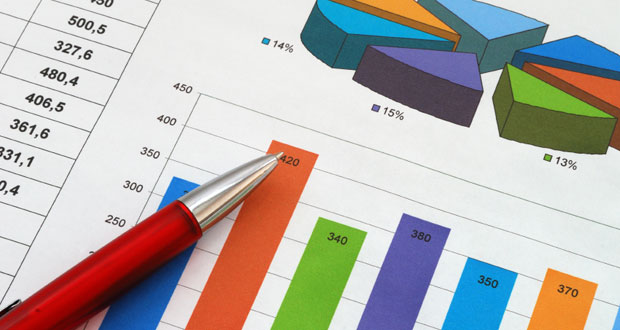Large, midsize advertisers spent 3.3% more year-over-year, offset by a significant 6.6% decline from smaller advertisers
NEW YORK – Total advertising expenditures increased 0.9 percent in 2013 and finished the year at $140.2 billion, according to data released by Kantar Media, the leading provider of strategic advertising and marketing information. Ad spending during the fourth quarter of 2013 rose 1.6 percent versus the year ago period.
“Advertising growth eased in 2013 without the stimuli of Olympic and political spending. However, the market still registered a gain for the fourth consecutive year”
“Advertising growth eased in 2013 without the stimuli of Olympic and political spending. However, the market still registered a gain for the fourth consecutive year,” said Jon Swallen, Chief Research Officer at Kantar Media North America. “Although the macro theme of ad dollars moving to digital media still generates much discussion, another significant but less recognized trend has taken hold. The ad market is currently being carried by the Top 1000 advertisers who, as a group, are steadily spending more while the long-tail of small-sized marketers is sharply cutting back.”
Measured Ad Spending By Media – Cable, Internet Display Grow
The Television sector benefitted in 2013 from higher ad expenditures on sports programming while also taking a hit from the predictable every-other-year decline in spending associated with political and the Olympics. These competing forces shaped results for individual TV types.
Cable TV expenditures rose 7.3 percent in 2013 and were led by double digit growth in spending from the automotive, consumer package goods, restaurant and telecom categories. Cable was also helped by a 1.3 percent increase in the amount of paid ad time. Since emerging from the ad recession in 2010, the average cable network has raised its commercial load by nine percent.
Full year Network TV expenditures dropped 3.4 percent. Gains from live sports programming – most notably the NFL and post-season basketball and baseball – were erased by the absence of an Olympics event. For Spot TV, 2013 spending fell 8.1 percent versus the prior year when a torrent of political money boosted the market. The auto category remained a bright spot for spot TV sellers as local dealers continued to raise their media investments amidst a strong sales climate for new vehicles.
Spanish language TV ad spending was up 2.9 percent in 2013, paced by higher sell-out levels at over-the-air networks. Syndication expenditures increased 0.5 percent.
Spending for online display, which currently does not include video or mobile ad formats, accelerated in the second half of 2013 and finished the full year 15.7 percent higher versus the prior period. Increased investments from financial service, telecom and travel advertisers contributed significantly to the results.
Outdoor posted a 4.4 percent gain in ad expenditures for 2013. A prime contributor to this result was the continuing expansion of digital signage, which gives advertisers more flexibility when purchasing space and allows operators to get a higher price. Over the past four years digital outdoor spending has grown five times faster than the overall medium.
Expenditures in Consumer Magazines as calculated by rate card prices rose 2.6 percent but advertising pages were down 1.9 percent. Higher outlays from marketers of personal care products, apparel and prescription drugs were offset by reductions in the travel and direct response categories. Sunday Magazines saw their full year spending decline 2.6 percent but comparisons were affected by the presence of one extra Sunday in 2012 and this accounts for most of the difference.
Local Newspaper ad expenditures fell 3.8 percent in 2013 and National Newspapers dropped 3.6 percent. Each experienced broadly lower demand from Financial Service, Retail and Motion Picture marketers. Losses in spending were consistent with reductions in the amount of space sold. Spanish Language Newspapers fared much better with a gain of 1.9 percent for the year.
Radio media tumbled in 2013. Local Radio fell 4.1 percent and National Spot Radio declined 3.3 percent, primarily from cyclical reductions in political spending. Network Radio expenditures dropped 15.9 percent, largely due to a reduction in the number of monitored networks.
|
Percent Change in Measured Ad Spending1 |
||||
| MEDIA SECTOR |
Year 2013 vs. 2012 |
|||
|
• Media Type |
||||
|
(Listed in rank order of full year 2013 spending) |
||||
| TELEVISION MEDIA | -0.1% | |||
|
• Cable TV2 |
7.3% | |||
|
• Network TV |
-3.4% | |||
|
• Spot TV3 |
-8.1% | |||
|
• Spanish Language TV4 |
2.9% | |||
|
• Syndication – National |
0.5% | |||
| MAGAZINE MEDIA5 | 1.8% | |||
|
• Consumer Magazines |
2.6% | |||
|
• B-to-B Magazines |
-1.7% | |||
|
• Sunday Magazines |
-2.6% | |||
|
• Local Magazines |
-0.5% | |||
|
• Spanish Language Magazines |
2.3% | |||
| NEWSPAPER MEDIA6 | -3.7% | |||
|
• Local Newspapers |
-3.8% | |||
|
• National Newspapers |
-3.6% | |||
|
• Spanish Language Newspapers |
1.9% | |||
| INTERNET (Display Ads Only) 7 | 15.7% | |||
| RADIO MEDIA 8 | -5.6% | |||
|
• Local Radio 9 |
-4.1% | |||
|
• National Spot Radio |
-3.3% | |||
|
• Network Radio |
-15.9% | |||
| OUTDOOR | 4.4% | |||
| FSIs10 | 3.4% | |||
| TOTAL | 0.9% | |||
|
Source: Kantar Media |
||
|
1. |
Figures are based on the Kantar Media Stradegy™ multimedia ad expenditure database across all measured media, including: Network TV (5 networks); Spot TV (738 stations in 125 DMAs); Cable TV (75 networks); Syndication TV; Hispanic Network TV (4 networks); Consumer Magazines (192 publications); Business-to-Business Magazines (282 publications); Sunday Magazines (8 publications); Local Magazines (30 publications); Hispanic Magazines (19 publications); Internet display (2,779 sites monitored at least one year); Local Newspapers (133 publications); National Newspapers (3 publications); Hispanic Newspapers (45 publications); Local Radio 753 stations in 36 markets); Network Radio (5 networks); National Spot Radio (205 markets); and Outdoor (194 markets). Figures do not include public service announcements (PSA) or house advertising |
|
|
2. |
Cable TV figures are based on 71 English language networks and do not include any Hispanic cable networks |
|
|
3. |
Spot TV figures are based on 663 English language stations and do not include any Hispanic stations |
|
|
4. |
Spanish Language TV includes 4 Hispanic broadcast networks, 4 Hispanic cable networks and 75 local Hispanic TV stations |
|
|
5. |
Magazine Media includes Publishers Information Bureau (PIB) data and reflects print editions of publications |
|
|
6. |
Newspaper Media figures reflect print editions of publications |
|
|
7. |
Internet expenditures reflect the value of desktop display advertising only. Video ad formats and mobile ad formats are specifically excluded. |
|
|
8. |
Radio Media figures only reflect commercial spot sales |
|
|
9. |
Local Radio expenditures are based on 36 markets. |
|
|
10. |
FSI data represents distribution costs only |
|
Measured Ad Spending By Advertiser – P&G in the Lead
Spending among the ten largest advertisers in 2013 reached $15,964.4 million, a 6.6 percent increase compared to a year ago. Among the Top 100 marketers, a diversified group representing more than two-fifths of all measured ad expenditures, spending was 3.3 percent higher.
Procter & Gamble was the top advertiser with expenditures of $3,173.0 million, up 11.8 percent compared to 2012. Spending increases were concentrated within its laundry, household cleaning and paper product brands.
General Motors was the second largest advertiser in 2013 with expenditures of $1,794.0 million, an increase of 10.0 percent. The gains were led by the Cadillac nameplate and marketing re-launches at the GMC truck division. At Toyota Motor, full year media expenditures rose 2.4 percent to $1,267.5 million behind a second-half push to promote redesigns of its popular Corolla sedan and Tundra pickup truck.
AT&T spending surged 15.2 percent to $1,793.8 million as the company continued to expand marketing support for its U-Verse video, voice and broadband service while also introducing its Digital Life service in select cities. Expenditures at rival Verizon Communications fell 13.3 percent to $1,219.2 million.
The largest growth rate among the Top Ten marketers was posted by Pfizer, up 26.8 percent to $1,138.2 million. The company undertook high-profile marketing launches for two new prescription medications while also boosting ad support for many existing Rx brands.
Comcast reduced its 2013 ad spending by 2.8 percent to $1,646.6 million. The company continued to boost spending for its Xfinity brand of bundled telecom services but these were offset by sharply lower spending at the movie studio division for a smaller number of new theatrical releases.
|
Top Ten Advertisers Of 20131 |
||||||||||||||||
| Rank | Company | Year 2013
($ Millions) |
Year 2012
($ Millions) |
% Change | ||||||||||||
| 1 | Procter & Gamble Co | $3,173.0 | $2,838.7 | 11.8% | ||||||||||||
| 2 | General Motors Corp | $1,794.0 | $1,631.3 | 10.0% | ||||||||||||
| 3 | AT&T Inc. | $1,793.8 | $1,557.8 | 15.2% | ||||||||||||
| 4 | Comcast Corp | $1,646.6 | $1,693.7 | -2.8% | ||||||||||||
| 5 | L’Oreal Sa | $1,549.3 | $1,462.3 | 5.9% | ||||||||||||
| 6 | Toyota Motor Corp | $1,267.5 | $1,238.1 | 2.4% | ||||||||||||
| 7 | Berkshire Hathaway Inc. | $1,253.0 | $1,179.4 | 6.2% | ||||||||||||
| 8 | Verizon Communications Inc. | $1,219.2 | $1,406.3 | -13.3% | ||||||||||||
| 9 | Pfizer Inc. | $1,138.2 | $897.3 | 26.8% | ||||||||||||
| 10 | Time Warner Inc. | $1,129.9 | $1,064.8 | 6.1% | ||||||||||||
| TOTAL2 | $15,964.4 | $14,969.7 | 6.6% | |||||||||||||
|
Source: Kantar Media |
||
|
1. |
Figures do not include FSI, House Ads or PSA activity |
|
|
2. |
The sum of the individual companies can differ from the total shown due to rounding |
|
Measured Spending By Size of Advertiser – Small Advertisers Decline
The Top Ten advertisers are certainly large, but they represent just a small fraction of all spending and can be an incomplete indicator of broader trends. Ranking and grouping companies into tiers provides deeper insights about how different segments of advertisers are behaving compared to the average and where growth is occurring.
In 2013, there was a dramatic dividing line in the market with large and medium sized advertisers on one side and small marketers on the other.
Whereas the entire ad market had a +0.9 percent growth rate, expenditures for large marketers (defined as the Top 100) and their medium-size counterparts (those ranked 101-1000) each increased by 3.3 percent. These two slices had a 78 percent share of all ad expenditures.
Small advertisers, defined as those outside the Top 1000, accounted for the remaining 22 percent of ad spend and this tier reduced expenditures by 6.6 percent. Thus the growth rate spread between the top and bottom of the market was almost ten percentage points, an unusually wide difference. Having fewer resources and faced with a slow-growth economy, long-tail marketers have become more cautious.
|
2013 Ad Spending Share and Growth Rate By Size of Advertiser1 |
||||||||||||
| Segment | Spending Rank |
% Share of Ad Spend |
Ad Spend Growth Rate |
|||||||||
| GRAND TOTAL | 100% |
0.9% |
||||||||||
| Large Advertisers | Rank 1-100 | 45% |
3.3% |
|||||||||
| Mid-Size Advertisers | Rank 101-1000 | 33% |
3.3% |
|||||||||
| Small Advertisers | Rank 1001+ | 22% |
-6.6% |
|||||||||
|
Source: Kantar Media |
||||||||||||
|
1. Figures do not include FSI spending |
||||||||||||
Measured Ad Spending By Category – Major Increases for Telecom
Expenditures for the ten largest advertising categories grew 1.8 percent in 2013 and reached $88,334.1 million. Retail was the leading category in dollar volume and finished 2013 up 0.2 percent at $16,019.3 million. A late year pickup in ad spend from the department store and consumer electronics segments was cancelled out by persistent weakness among the apparel, jewelry, food and drug store segments.
Automotive was the second largest category with $15,211.8 million of spending, up 3.8 percent from the prior year. Manufacturer expenditures rose 3.8 percent and auto dealers spent 3.9 percent more. With the auto market recovery completing its fourth year, ad spending is still being pushed higher by the large number of new car buyers and a steady flow of marketing launches for new and redesigned models.
Telecom finished the year with expenditures of $9,358.5 million, an 8.2 percent increase that was best among the Top Ten categories. Growth was propelled by well-funded smartphone model introductions from Nokia, Blackberry and Motorola. By contrast, spending from wireless providers had a very small gain and investments from TV service providers turned downward.
Insurance cracked the Top Ten rankings as spending rose 8.1 percent to $5,271.6 million. While auto insurers remain the dominant face of the category, there was a significant spending increase from health insurance organizations tied to the rollout of federal and state insurance exchanges mandated by the Affordable Care Act.
Media expenditures for Financial Services fell 4.1 percent to $7,600.2 million. Weakness in ad budgets for credit cards and retail banking negated higher spending for consumer lending, particularly home mortgage loans.
|
Top Ten Advertising Categories Of 20131 |
||||||||||||||||
| Rank | Category | Year 2013
($ Millions) |
Year 2012
($ Millions) |
% Change | ||||||||||||
| 1 | Retail | $16,019.3 | $15,981.9 | 0.2% | ||||||||||||
| 2 | Automotive | $15,211.8 | $14,654.2 | 3.8% | ||||||||||||
|
$9,188.7 | $8,855.1 | 3.8% | |||||||||||||
|
$6,023.1 | $5,799.1 | 3.9% | |||||||||||||
| 3 | Telecom | $9,358.5 | $8,651.4 | 8.2% | ||||||||||||
| 4 | Local Services | $9,133.1 | $8,740.1 | 4.5% | ||||||||||||
| 5 | Financial Services | $7,600.2 | $7,926.1 | -4.1% | ||||||||||||
| 6 | Personal Care Products | $7,032.9 | $6,891.7 | 2.0% | ||||||||||||
| 7 | Food & Candy | $6,627.2 | $6,567.2 | 0.9% | ||||||||||||
| 8 | Restaurants | $6,448.8 | $6,129.6 | 5.2% | ||||||||||||
| 9 | Direct Response | $5,630.5 | $6,357.0 | -11.4% | ||||||||||||
| 10 | Insurance | $5,271.6 | $4,878.1 | 8.1% | ||||||||||||
| TOTAL2 | $88,334.1 | $86,777.2 | 1.8% | |||||||||||||
|
Source: Kantar Media |
||
|
1. |
Figures do not include FSI or PSA activity |
|
|
2. |
The sum of the individual categories can differ from the total shown due to rounding |
|
About Kantar Media
Kantar Media provides critical information that helps our clients make better decisions about communications. We enable the world’s leading brands, publishers, agencies and industry bodies to navigate and succeed in a rapidly evolving media industry. Our services and data include analysis of paid media opportunities; counsel on brand reputation, corporate management and consumer engagement through owned media; and evaluating consumers’ reactions in earned media. As the global house of expertise in media and marketing information, Kantar Media provides clients with a broad range of insights, from audience research, competitive intelligence, vital consumer behaviour and digital insights, marketing and advertising effectiveness to social media monitoring. Our experts currently work with 22,000 companies tracking over 4 million brands in 50 countries.
For further information, please visit us at www.KantarMedia.US.
Follow us on:
www.twitter.com/kantarmedia_na
www.facebook.com/KantarMediaGlobal
http://www.linkedin.com/companies?trk=hb_tab_compy









